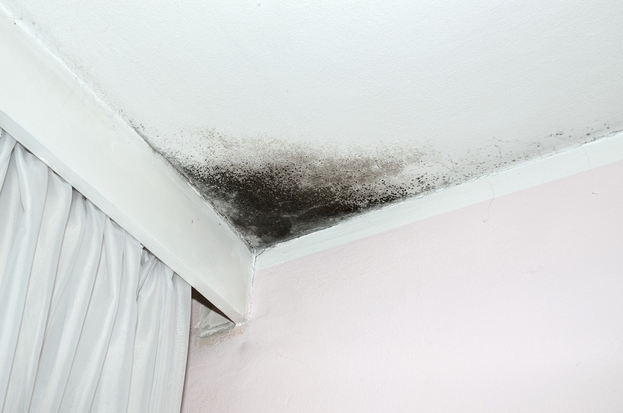
Most people approach buying a new house by considering everything they want. How many bedrooms, bathrooms, what kind of view, how big the yard is… New home buyers often fail to consider all the red flags they need to be on the lookout for.
It’s not nearly as fun to dwell on these negatives. But it does no good to end up in a home with a perfect layout and a gorgeous yard only to find out the roof, windows, and sewer line all need to be replaced.
So, before you start ogling views and celebrating closet space, take some time to read this. We’ll tell you what to look for when buying a house to ensure you get a perfect palace instead of a lousy lemon.
10 Things to Look for When Buying a New House
When you enter any potential new home, you want to come prepared. That means discussing your preferences and “hard no’s” with your family before setting out. It also means bringing a comprehensive house-hunting checklist to help organise your thoughts and guide you in what to look for.
After you get to the home, spend some time looking for signs of each of the following red flags. Searching for these warning signs can help assure you don’t fall in love with a house that is more trouble than it’s worth.
1. Signs of Water Damage
Visible signs of water damage are a problem for many reasons. Not only does it indicate that the house experienced a leak or flood (and could very well experience this again), but it reveals the original homeowners failed to have the issue properly mitigated.
Water damage, whether from a slow leaking pipe or torrential downpours, can cause significant problems. Flooring and drywall swells, pipes rust, and mould thrive. If there are still visible signs of water damage, the materials affected by the leak were not replaced or sealed correctly.
The last thing you want to invest in is a house hiding major mould issues or studs warped beyond repair. And you certainly don’t want to flip the bill for the mitigation job the former owners should have done months or years ago.
2. Foundation Cracks
All houses of a certain age will have hairline cracks in the paint and around windows. But anything more substantial than a pencil scratch should be considered a warning sign.
Lines of missing mortar in brick walls, fissures in basement floors, and gaping cracks in walls all point to a serious—and likely continuing—foundation problem. This issue is not easy to fix and even harder to pay for. Unless one of the items on your wish list is to own a home in the Oregon Vortex, you want to avoid houses with foundation issues.
3. Easy-Open Windows and Doors
Sticky or hard-to-shut windows and doors happen when the frame is out of alignment. This can occur for one of two reasons.
The first is what we just talked about: foundation problems. When the foundation of a home starts to sag, it quickly pulls square frames out of alignment. This makes it so windows can’t close fully and doors rub on their jambs.
The other possibility is that the windows or doors were not installed properly. This is a less costly fix, but still, one that needs to be resolved if you want to live comfortably.
Doors can easily be rehung to account for out-of-square jambs. But windows will likely have to be replaced. And if the issue is a structural problem, then you can expect the job to cost a lot more than usual.
4. Cleanliness Issues
It is rare to walk into an open house and find a home that isn’t perfectly clean. But if you do, don’t overlook it.
Real estate agents and eager homeowners go to great lengths to stage homes for prospective buyers. If the home is still noticeably dirty after all this cleaning and organising, just imagine what it looked like before.
While you might think cleanliness problems will disappear once the home is vacated, this is only sometimes true. Rats, mice, cockroaches, bedbugs, and mould thrive in dirty conditions. And even after the furniture is gone, these pests will still be hiding under appliances, in the ducts, and inside your walls.
5. Mould

Speaking of mould, this is one thing you always want to be on the lookout for. Even beyond water damage and cleanliness issues, mould growth can point to problems you might have missed.
Mould on bathroom ceilings can indicate a ventilation problem. Mould staining around drains, shower bases, and tubs can mean water pools in the wrong places. And mould in cabinets and vanities is another clear sign that previous leaks were not mitigated the way they should have been.
Don’t be afraid to poke your head in dark crevices like cabinets, behind appliances, and around the utilities looking for mould as you walk through a potential buyer.
6. DIY Flooring
There is nothing wrong with laying the tile or putting the laminate down. But you don’t necessarily want to be the one taking ownership of a bad DIY flooring job.
If the job is poor enough that you want to redo it, then you should consider the associated labour and expense in your deliberation. But also consider that you don’t know what lurks below that DIY job.
Did the previous owners throw tile over old asbestos linoleum? Did they glue the laminate plank directly to the subfloor? These surprises may not be worth finding after you’ve bought the home.
7. Problems with the Home Exterior
It’s easy to get caught up gawking at the inside of a home, but don’t forget to take a hard look at the exterior as well.
Replacing old roofs, siding, and stucco is pricey. But this bill can quickly reach exorbitant levels if asbestos materials or lead-containing paint is involved. Not to mention that problems with the exterior can quickly lead to problems with the interior if rain or snow melt begin to make its way inside.
8. Code Problems
Most people buying a new home are willing to overlook simple code issues like missing smoke detectors, bathroom heating and vents, and whether a room is considered a legal bedroom. But depending on your future plans and the rental code regulations in your area, it may be worth looking a little harder at these.
Many a landlord has had to shell out money they didn’t have to correct code issues after a tenant complained to the state. If you have plans to rent your house someday, it is worth considering how much these fixes will cost you when the time comes.
9. Nearby Hazards
Sometimes new house red flags aren’t in the house at all. Or even in the yard.
Nearby creeks, rivers, and coastlines can all become potential hazards under the right circumstances. Flooding is most likely if you have a body of water near your home. And big, damaging storms are becoming increasingly common in coastal cities.
Other “hazards” like nearby prisons, freeways, and even vacant houses may or may not become directly hazardous to you or your home. But they are sure to be hazardous to your bottom line when it’s time to assess your home’s resale value in the future.
10. Ongoing Maintenance
Most new home buyers are good about considering possible renovations a new house will need and determining if they have the money to cover them. But what most people need to look at is the cost of ongoing maintenance that can come with a new home.
The most apparent ongoing maintenance items are swimming pools, hot tubs, and other water features. But things like large trees, sprinkler systems, ageing appliances and systems, and other items in your home and on your property can slowly drain you of money after you’ve purchased the home.
Don’t forget to consider these before you make your final decision. If you don’t have the funds to keep up with these maintenance costs, consider these things and all the bullet points above red flags you should look for when buying a new house.
Ref: 3088.27011




 POSTED BY
POSTED BY 

